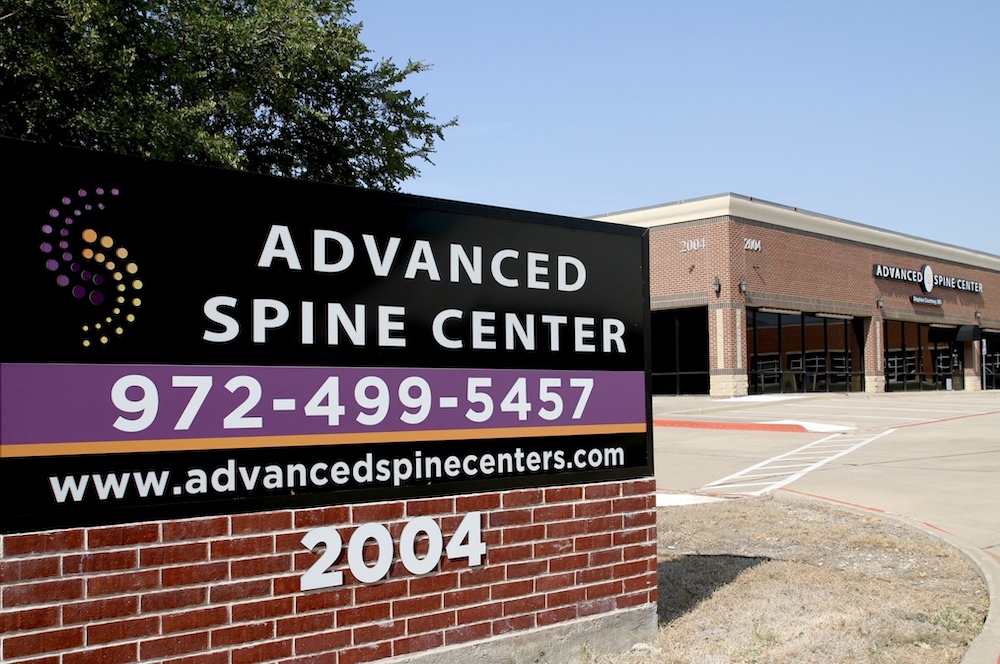Specialties

If you’re suffering from the pain and discomfort of piriformis syndrome, the Advanced Spine Center in Plano, TX is here for you. Our orthopedic spine specialists offer cutting-edge piriformis syndrome treatment options tailored to your specific needs. From conservative options to minimally-invasive surgical techniques, we offer comprehensive care to help you reclaim your pain-free life.
Schedule an appointment with us to discuss your symptoms with a highly experienced and compassionate provider. Call today at 972-499-5457 or schedule your appointment online.
What Is Piriformis Syndrome?
Piriformis syndrome is a neuromuscular condition where the piriformis muscle, located in the buttock region, spasms or becomes tight, irritating the nearby sciatic nerve. This irritation can cause pain, numbness, and tingling along the back of the leg and into the foot. It often results from prolonged sitting, excessive physical activity, or muscle injury.
Piriformis Syndrome vs Sciatica
Piriformis syndrome is a specific condition in which the piriformis muscle irritates the sciatic nerve. However, sciatica is a broader term that refers to symptoms of pain, numbness, and tingling caused by sciatic nerve compression. Sciatica can occur due to herniated discs, spinal stenosis, spondylolisthesis, or other conditions. Piriformis syndrome is basically one potential cause of sciatica, and it can lead to severe pain.
Piriformis Syndrome Symptoms
Symptoms of piriformis syndrome generally occur in the buttock, hip, or upper leg area. These symptoms can include:
- Numbness
- Pain
- Tingling
- Aching, burning, or shooting pain
During certain activities, such as long periods of sitting, walking, running, and climbing stairs, symptoms can worsen.
Piriformis Syndrome Pain Pattern

Many patients report specific pain patterns when they experience piriformis muscle syndrome. They often report gluteal region pain described as burning, aching, or shooting. This pain tends to travel down the back of the leg. Numbness and tingling are also common along the sciatic nerve.
What Does Piriformis Syndrome Feel Like?
Piriformis syndrome typically feels like a deep, aching pain in the buttock, which can radiate down the back of the leg. This pain may be accompanied by numbness, tingling, or a burning sensation along the sciatic nerve’s path. It can also cause muscle spasms.
What Causes Piriformis Syndrome?
Piriformis syndrome occurs when the piriformis muscle presses on the sciatic nerve. This can occur due to muscle spasms, inflammation, or tightness. Contributing factors include overuse from activities such as running or cycling, prolonged sitting, direct trauma to the buttock, or anatomical variations in the muscle or nerve.
Poor posture, muscle imbalances, and inadequate warm-up or stretching before physical activities can also increase the risk of developing this condition. When piriformis syndrome occurs due to an abnormal anatomy, this is referred to as primary piriformis syndrome.
How Is Piriformis Syndrome Diagnosed?
Piriformis syndrome is diagnosed through a combination of clinical evaluation, patient history, and physical examinations. Initially, a healthcare provider will review the patient’s symptoms, medical history, and activities that might contribute to the condition. This is followed by a physical examination to assess pain, tenderness, and muscle strength in the buttock and lower back regions.
In addition to the piriformis test, other diagnostic techniques may include imaging studies like MRI or CT scans to rule out other causes of sciatic nerve compression, such as herniated discs or spinal stenosis. Electromyography (EMG) might also be used to assess nerve function and identify abnormalities.
Piriformis Syndrome Test

One common physical examination used to diagnose piriformis syndrome is the piriformis test, also known as the FAIR test (Flexion, Adduction, and Internal Rotation). During this test, the patient lies on their back with the affected leg lifted and bent at the knee.
The examiner then moves the leg across the body (adduction) and rotates it inward (internal rotation). Pain or discomfort during this maneuver can indicate piriformis syndrome, as it places stress on the piriformis muscle and sciatic nerve.
Piriformis Syndrome Treatments in Plano, TX
To treat piriformis syndrome symptoms, we tend to opt for conservative measures initially. These conservative treatment options can include medication, injections, and physical therapy. However, if conservative treatments fail to provide relief, surgery may be necessary. In the following sections, we outline the most common treatment options for piriformis syndrome.
Piriformis Syndrome Medication
Over-the-counter pain relievers such as nonsteroidal anti-inflammatory drugs (NSAIDs) like ibuprofen or naproxen are commonly used to relieve pain and inflammation associated with piriformis syndrome. In more severe cases, muscle relaxants or prescription pain medications might be recommended by your healthcare provider.
Piriformis Syndrome Injection in Plano, TX
If medications and physical therapy do not provide sufficient relief, corticosteroid injections directly into the piriformis muscle can be administered to reduce inflammation and provide pain relief. In some cases, a local anesthetic may be combined with the corticosteroid to provide immediate pain relief. Another option is botulinum toxin (Botox) injections, which can help relax the piriformis muscle and reduce pressure on the sciatic nerve.
Piriformis Syndrome Physical Therapy

Physical therapy is a key component of treating piriformis syndrome. A physical therapist will design a program that includes stretching exercises to increase flexibility in the piriformis muscle and surrounding areas, as well as strengthening exercises to improve muscle balance and support.
Techniques such as deep tissue massage, myofascial release, and ultrasound therapy might also be used to relieve muscle tension and improve blood flow. In addition, physical therapists may teach proper posture and body mechanics to prevent piriformis syndrome from worsening.
Piriformis Syndrome Exercises
During physical therapy, patients often work with a physical therapist to stretch and strengthen the piriformis muscle, as well as the surrounding muscles in the hips, thighs, and legs. By stretching and engaging the affected muscle, this loosens the muscle fibers and joints, improving function and range of motion. Some exercises that can help achieve this goal include the following.
- Cross-body piriformis stretch
- 4-point piriformis stretch
- Supine piriformis stretch
- Knee-to-chest piriformis stretch
Piriformis Syndrome Exercises to Avoid
During a physical therapy program, you should also learn which movements and exercises to avoid when suffering with piriformis syndrome. For the most part, patients should avoid activities that cause pain, such as running or biking. Prolonged periods of sitting can also aggravate the condition.
Piriformis Syndrome Surgery in Plano, TX

If all conservative measures fail to relieve symptoms from piriformis syndrome, surgery may be the best remaining option. The primary goal of surgery is to alleviate pressure on the sciatic nerve and address the underlying cause of the muscle irritation. Two major surgical techniques used for treating piriformis syndrome are sciatic nerve decompression and piriformis muscle release.
Piriformis Syndrome Medical Procedure
Sciatic Nerve Decompression
Because the pain occurs due to sciatic nerve compression, decompression is a common surgical technique used to address piriformis syndrome. This technique involves surgically freeing the sciatic nerve from any entrapment or compression caused by the piriformis muscle. The surgeon may remove any fibrous bands, scar tissue, or other structures compressing the nerve.
The goal is to create more space around the nerve, reducing pain and improving function. Sciatic nerve decompression is typically performed through a small incision in the buttock, using minimally invasive techniques to reduce recovery time and postoperative discomfort.
Piriformis Muscle Release
In this procedure, the surgeon partially or completely cuts the piriformis muscle to relieve tension and pressure on the sciatic nerve. This technique aims to lengthen the muscle and prevent it from compressing the nerve. The surgery can be done through open surgery, which involves a larger incision, or via minimally invasive techniques, which use smaller incisions and specialized instruments. Minimally invasive approaches tend to result in less pain, a quicker recovery, and less damage to the tissues surrounding the piriformis muscles.
Piriformis Syndrome FAQs
How to Sleep with Piriformis Syndrome?
The piriformis muscle runs from the lower spine to the top of the thigh bone. Some patients have difficulty sleeping comfortably when this muscle presses on their sciatic nerve. We often recommend sleeping on your back with a pillow under your knees. This reduces pressure on the lower back and sciatic nerve.
For patients who prefer sleeping on their side, they can place a pillow between their knees to keep their hips aligned and reduce strain on the piriformis muscle. Avoid sleeping on the affected side to prevent additional pressure.
Is Walking Good for Piriformis Syndrome?
Walking can be beneficial for piriformis syndrome as it helps maintain mobility, improve circulation, and reduce muscle stiffness. However, it’s important to walk with proper posture and avoid overexertion of the muscle nerve. Start with short, gentle walks and gradually increase the duration as tolerated.
If walking aggravates the symptoms, it may be necessary to modify the activity or take breaks. Incorporating regular stretching and strengthening exercises for the piriformis muscle can also enhance the benefits of walking and aid in recovery.
How Long Does Piriformis Syndrome Last?
Piriformis syndrome’s duration varies depending on several factors. However, most individuals experience significant improvement of the condition within a few weeks to a few months at most. Conservative treatments are typically enough to reduce pain, but not always.
If the condition is severe or poorly managed, it can last for several months or become a chronic issue. When this happens, surgery is often necessary to fully treat the condition.
How to Sit with Piriformis Syndrome?
When sitting with piriformis syndrome, it’s important to maintain good posture and minimize pressure on the affected area. For starters, use a supportive chair with good lumbar support to follow the natural curve of your lower back. Avoid overly soft or hard surfaces that may aggravate the condition.
Distribute your weight evenly on both buttocks and avoid crossing your legs, as this can aggravate piriformis syndrome by compressing the sciatic nerve. Consider using a cushion or small pillow to support the lower back and alleviate pressure on the piriformis muscle.
Avoid prolonged sitting without taking breaks. Take regular breaks to stand, stretch, or walk around. You can set reminders to change your sitting position regularly throughout the day to prevent stiffness and discomfort.
Lastly, sit up straight with your shoulders relaxed and your feet flat on the floor. Avoid slouching or leaning forward, as this can increase pressure on the lower back and aggravate symptoms. By following these tips, you should be able to sit comfortably without irritating your piriformis muscle.
What If My Piriformis Syndrome Won’t Go Away?
If pain or a dull ache persists despite conservative treatments and lifestyle modifications, it may be time for more advanced treatment options. We strongly recommend speaking with an orthopedic professional at the Advanced Spine Center. Our providers can address various underlying causes of piriformis syndrome, such as the following.
- Muscle imbalances
- Structural issues
- Nerve entrapment
- Poor posture
- Repetitive movements
It is also possible that your pain originates from something other than piriformis syndrome, which can explain the lack of pain relief from treatments. Some conditions with symptoms that can mimic those of piriformis syndrome include herniated discs and sacroiliac joint dysfunction.
Contact the Advanced Spine Center for Piriformis Syndrome Treatment in Plano, TX
Don’t let piriformis syndrome hold you back any longer. At the Advanced Spine Center, our expert team is dedicated to providing you with personalized care and effective treatment options to address your piriformis syndrome symptoms. Whether you’re struggling with chronic pain, limited mobility, or discomfort during daily activities, we’re here to support you every step of the way.
With our advanced techniques and compassionate approach, we’ll work together to develop a customized treatment plan that meets your unique needs and helps you achieve lasting relief. Take the first step towards a pain-free life by scheduling a consultation with our experienced Plano orthopedic spine specialists today.


